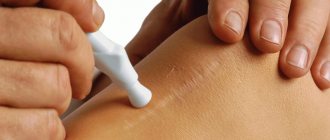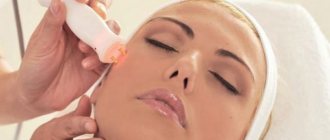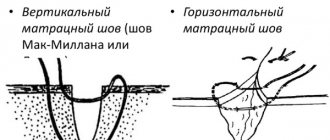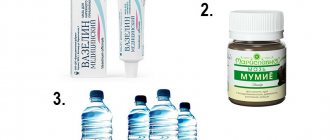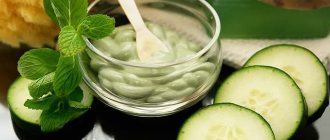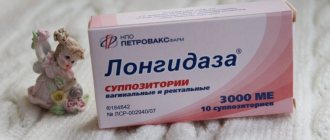Prices for treatment (removal) of scars and scars
Dear patients! The specialist will inform you about the exact cost and scope of necessary procedures after consultation.
Dermatology
- Primary appointment with a dermatologist (trichologist) (without dermatoscopy)
1200 rub.
- Repeated appointment with a dermatologist (trichologist) (without dermatoscopy) (no more than 2 months from the previous appointment)
900 rub.
- Dermatoscopy
450 rub.
- Examination of the scalp under magnification (trichology)
800 rub
- Wood's lamp examination
250 rub.
- Histological examination of the material
2300 rub.
Removal of skin tumors
- Removal (radio wave destruction) of milia, papillomas, small benign neoplasms, pinpoint angiomas, acne elements, molluscum contagiosum:
- 1 element
400 rub
- From 20 elements
300 rub
- From 50 elements
200 rub
- Removal of a neoplasm on the eyelid – 1 element
800 rub
- Removal of telangiectasia – 1 sq.cm (radio wave destruction)
500 rub
- Removal of benign neoplasms (keratoma, fibroma, etc.) - 1 element (radio wave destruction or cryodestruction). Anesthesia included in the price
:
- D
1100 rub.
- D = 0.5 - 1 cm
1500 rub.
- D > 1 cm
1900 rub.
- Removal of palmar warts – 1 element). Anesthesia is included in the price.
1000 rub
- Removal of plantar warts – 1 element (up to 0.5 cm). Anesthesia is included in the price.
1200 rub.
- Removal of plantar warts – 1 element (more than 0.5 cm). Anesthesia is included in the price.
1500 rub.
- Radiosurgical removal of benign melanocytic and non-melanocytic formations (moles, wen, etc.) - 1 element. Anesthesia included in the price:
- D
1500 rub.
- D = 0.5 - 1 cm
2000 rub
- D > 1 cm
2500 rub.
- Treatment of an area of the scalp for radiosurgical removal of the tumor
400 rub
- * For simultaneous removal of 5-9 formations - 5% discount; For simultaneous removal of more than 10 formations - 10% discount
Anesthesia for extractions
- Application anesthesia (cream, spray)
200 rub
- Injection anesthesia (1 ampoule)
400 rub
Scar tissue treatment
- Treatment of scar tissue (cryodestruction) – area up to 1.5 cm
1500 rub.
- Intramuscular injection of the drug (without the cost of the drug)
500 rub
- Intralesional injection of the drug in the scalp area (without the cost of the drug)
1500 rub.
- Intralesional injection of the drug (without the cost of the drug)
800 rub
- Diprospan
500 rub
- Longidaza
900 rub.
Laboratory research
- Collection of biological material
300 rub
- Cytological examination of scrapings and impressions from the surface of the skin and mucous membranes
900 rub.
- Microscopy and culture for parasitic fungi (nails)
1600 rub.
- Microscopy and culture for parasitic fungi (skin)
1600 rub.
- Parasitic fungi, microscopic examination of skin samples
900 rub.
- Parasitic fungi, microscopic examination of nail samples
900 rub.
- Demodex test, microscopy (skin, abscess discharge)
800 rub
- Demodex test (eyelashes)
800 rub
- Sowing of wound discharge and tissues for flora and sensitivity to antimicrobial drugs
1250 rub.
- Culture of microflora, determination of sensitivity to antimicrobial drugs and bacteriophages
1300 rub.
- Sowing of wound discharge and tissues for flora and sensitivity to antimicrobial drugs according to the extended spectrum
2100 rub.
Injection methods for the treatment of hypertrophic scars (Longidaza, corticosteroids)
You are reading the section about acne and post-acne. Previous topic: silicones. Silicone dressings, plates, patches and films.
Injecting drugs into scars
widely used in dermatocosmetology. Most often, 2 groups of drugs are used:
- enzymatic (enzyme) preparations based on the enzyme hyaluronidase
, - prolonged hormones glucocorticosteroids
.
Verapamil is very rarely used in the treatment of scars.
Enzyme preparations for injection into scars
The following drugs are used:
- Lidaza,
- Longidaza,
- Alidasa, Hyalidasa, Hyalasa, Hyasa, Hyason, Widasa, etc.
They use the enzyme hyaluronidase
, which:
- depolymerizes (breaks up) glycosaminoglycans ( the main component of the intercellular substance
), - increases the permeability of connective tissue,
- increases elasticity,
- inhibits collagen formation.
However, the use of the hyaluronidase enzyme has its disadvantages
:
- hyaluronidase instability ( unstable enzymatic activity
), - reactogenicity ( the ability to cause adverse reactions
), - allergenicity ( risk of developing allergic reactions
).
Longidaza is most often recommended
.
Longidaza
The drug Longidaza is formed by conjugation (connection) of the enzyme hyaluronidase
with an analogue of the immunomodulator polyoxidonium.
Polyoxidonium has its own properties
:
- immunomodulatory,
- antioxidant ( fights free radicals
), - detoxifying ( anti-poisoning
).
Thanks to the combination with polyoxidonium, Longidaza:
- more resistant to destructive and inhibiting (inhibiting activity) factors,
- lasts longer
- less allergenic,
- regulates the synthesis of inflammatory factors ( interleukins, tumor necrosis factor
), - stimulates the immune system.
Longidaza is used to treat hypertrophic and retracted
(peak-shaped) scars. Clinical studies have proven its effectiveness.
Before administration, Longidaza is diluted in 1.5-2 ml of liquid of your choice:
- saline,
- water for injections,
- 0.25% novocaine
(local anesthetic), - 1% trimecaine
(also a local anesthetic).
Instructions for Longidaza.
Longidaza is injected into scars
using a needle:
- for hypertrophic scars - papular (before the formation of nodules),
- for “peak-shaped” scars - perpendicularly downward to a depth of 2-4 mm.
The procedure is performed weekly. Usually 10-15 sessions are performed.
Long-acting corticosteroids
Prolonged (from the English long - long
) corticosteroids are long-acting glucocorticoid hormones.
They are highly effective in the treatment of hypertrophic and keloid
scars.
Mechanism
actions of corticosteroids:
- inhibit the release of cytokines ( inflammatory factors
) from leukocytes:
interleukins, β-interferon
, - suppress the formation of endothelial growth factor
and
tumor necrosis factor
, - stop the division of myofibroblasts
(these cells, when connective tissue is damaged, participate in healing by tightening the wound), - reduce the number of mast cells
(they are involved in the occurrence of allergic reactions by releasing histamine upon contact with an antigen).
The most common long-acting corticosteroids used to treat scars are:
- Kenalog
(triamcinolone), - Diprospan
(betamethasone).
When injected into scars, corticosteroids relieve itching and make scars softer and flatter. The number of injections depends on the rate of scar reduction. Typically, injections are given every 1.5-2 weeks.
cryodestruction of the scar shortly before the corticosteroid injection.
(
destruction of the rumen with liquid nitrogen
).
Very low temperatures cause swelling of the dermis and degeneration ( degeneration, reverse development
) of collagen fibers.
Liquid nitrogen is applied to the rumen for 30-60 seconds until persistent white frost
(
cold freeze
). After thawing, a corticosteroid is injected using a needle. Read more about this in the next topic Cryodestruction and microwave therapy.
Side effects
corticosteroids with long-term use:
- atrophy ( thinning
) of the skin, - hypopigmentation ( skin lightening
), - telangiectasia ( spider veins and spider veins on the skin
), - steroid acne,
- systemic ( general
) effect: menstrual irregularities, hypertrichosis (
hairiness
).
To reduce the risk of complications, corticosteroids are diluted 2-5 times
by using:
- physiological solution,
- 2% lidocaine
.
Such dilution reduces the risk of complications, but at the same time reduces the overall effectiveness of treatment.
Combination with pentoxifylline
A corticosteroid injected into the scar is often combined with pentoxifylline
, enhancing the effect of the corticosteroid.
Pentoxifylline has a number of effects
:
- destruction of fibrin threads ( fibrinolytic effect
), - reducing the size of scar tissue,
- inhibition of DNA activity of fibroblasts ( connective tissue cells that form the extracellular matrix and future proteins collagen and elastin
), - reduces the synthesis of inflammatory factors ( tumor necrosis factor and other cytokines
).
Combination of hormone and pentoxifylline
(in a ratio of 2 to 1) reduces the risk of side effects from corticosteroids. Injections are performed strictly within the scar, avoiding the mixture getting into the surrounding tissue.
Methods of administration
:
- by infiltration ( layer-by-layer injection with the same needle at different depths
), - multiple injections in small doses until papules (nodules) with a diameter of 1 mm are formed evenly distributed over the surface of the scar.
Injections are performed only in the upper third of the dermis
. The bevel of the needle should be directed upward, which allows for better control of the volume and distribution of the injected drug. It is dangerous to inject the drug along the edge of the scar.
Injections are repeated after 7-10 days. As the scars decrease, the proportion of hormones is gradually reduced until complete withdrawal ( the ratio of hormone and pentoxifylline is reduced from 1:1 to 1:5
).
Further treatment of scars is carried out only with pentoxifylline
, which is injected over the entire surface of the scar in the form of papules with a diameter of 2-4 mm. The procedure is repeated every 5-7 days, for a total of 4-10 sessions.
Next topic: cryodestruction and microwave therapy in the treatment of keloid scars.
More on the topic:
- Injection treatment of atrophic scars (mesotherapy, injection contouring)
Was the material useful? Share the link:
Description
Scars can occur in response to any aggressive impact on the skin. The most common causes of scars are:
- surgical operations;
- injuries;
- burns;
- skin diseases.
Discounts on Botox Xeomin Botulax until September 30, 2020
20% discount - offer limited to availability of the drug
Scars can be of two types:
- atrophic;
- hypertrophic.
Atrophic scars occur as a result of an incomplete process of tissue formation to replace destroyed skin cells.
Hypertrophic is the result of excessive formation of new tissue in place of dead cells. They are visually more noticeable, protruding above the surface of the skin.
Cryotherapy
Cryotherapy is one of the effective methods for treating scars. It can be used alone or in combination with other types of treatment.
Treatment of scars with nitrogen is a cosmetic procedure related to the method of local cryotherapy, in which skin imperfections are removed using cold exposure.
Cryotherapy has proven itself in the field of dermatology and cosmetology and is widely used in medical institutions. Treatment using cryotherapy is quite comfortable and does not cause pain.
When using cryotherapy to remove scars, the doctor selects a treatment regimen individual for each patient. This may include injections of anti-inflammatory drugs, physical therapy methods, and more.
In addition, the final result depends on the individual characteristics of scar formations: hypertrophic and fresh scars are much more amenable to cosmetic correction than keloid and old ones.
Scar treatment
Collostotherapy is a restorative therapy for the dermis.
Collostotherapy restores lost collagen, providing the cellular environment characteristic of young skin.
Collost is a sterile bioplastic collagen material with a fibrous structure. In its structure and composition it is as close as possible to human collagen. Gel "Collost" is a Russian invention and has found its application in various fields of practical medicine - in traumatology, dentistry, urology, etc. Collost gel injections provide excellent results in cosmetology. The main function of the drug is to restore lost natural collagen.
Why collagen?
Collagen is the main natural protein of connective tissue. It is this that ensures normal physiological regeneration of tissue and a strong skin framework. Strands of collagen provide a scaffold on which new cells can grow.
Collagen is actively used in cosmetology and aesthetic medicine. But for its action to have the desired effect, external use of a cosmetic product containing collagen is not enough.
That is why it must penetrate the skin and act on the middle and deep layers. For this, doctors use special collagen injections.
Scarring
Scars are the result of the biological process of skin healing, which results in the formation of fibrotic scar tissue
The cause of scar formation can be various skin injuries (burns, wounds, surgeries), as well as skin diseases such as acne (acne), dermatitis, furunculosis, etc.
As a rule, a “normotrophic” scar does not require correction - thin, pale, does not protrude above the surface of the skin, does not grow, is inconspicuously located and suits the owner of the scar. In the case when scars are located on open areas of the body, especially on the face, neck, chest, they can significantly reduce the quality of life and require treatment.
Until recently, the most common methods of scar correction were resurfacing and surgical excision. In recent years, the use of the COLLOSTOTHERAPY method has made it possible to take a fresh look at the difficult task of correcting atrophic scars and significantly improve treatment results. The method is based on the use of COLLOST™ gel, which is a matrix for targeted tissue regeneration, which allows it to be used not only as an injectable micro-implant, but also to activate the synthesis of one’s own collagen.
How does COLLOST™ work in the treatment of scars?
COLLOST™ is used to replenish collagen lost by the skin in the area of scars.
14 days before the procedure, the cosmetologist performs an allergy test (injects 0.1 ml of COLLOST™ gel into the skin of the forearm) in order to exclude an allergic reaction. Before starting the course of treatment, the doctor evaluates the allergy test and carries out the COLOSTOTHERAPY procedure.
To reduce sensitivity, before starting the procedure, doctors at the Sharm clinic perform local anesthesia, applying an anesthetic to the scar area. As a result, the procedure is tolerated comfortably by the patient.
Sterile 7% COLLOST™ gel is injected with a thin needle directly into the scar and into the surrounding skin to a depth of 1 to 3 mm.
After 2 weeks, the cosmetologist evaluates the changes and performs the next COLOSTOTHERAPY procedure.
After injection of COLLOST™ gel, the scar is mechanically filled and the skin surface is leveled.
At the site of injection of COLLOST™ gel, own collagen fibers begin to form, which fill the area of the defect.
Next, the doctor recommends coming back in a month and repeating the procedure.
To achieve maximum results, as a rule, 2 to 8 COLOSTOTHERAPY procedures are required.
COLOSTOTHERAPY is successfully combined with other techniques, for example, peelings.
Benefits of the COLLOSTOTHERAPY procedure
The procedure is successfully used to treat both “young” and “old” scars.
COLLOSTOTHERAPY replenishes lost collagen and restores normal skin structure.
The procedure is safe, since the doctor does an allergy test first (14 days before the procedure), which eliminates allergic reactions.
The procedure is painless, as the doctor first applies a local anesthetic to the skin.
The COLLOSTOTHERAPY procedure, compared to other methods of scar treatment, has an optimal price/quality ratio.
Application of collostotherapy - restorative therapy of the dermis during age-related changes.
What is dermis? This is a connective tissue that provides individual skin thickness, strength and elasticity. The dermis contains collagen, elastic and reticular fibers of connective tissue, which are responsible for the condition and elasticity of the skin. The condition of the dermis directly affects hydration and turgor, that is, the tension and elasticity of the skin.
Age-related changes in the skin occur due to numerous reasons: climatic, chemical, biological, as well as UV radiation (“skin photoaging”). The genetically programmed program of aging and cell death is activated. This process is facilitated by harmful substances accumulated by cells throughout life, changes in hormonal status, decreased immunity, stress, etc.
Signs of natural skin aging develop gradually. The number of collagen fibers that serve as the skin's framework progressively decreases. In addition, the rate of collagen renewal slows down. The skin becomes thinner, its elasticity and firmness decrease, wrinkles appear, and the shape and oval of the face changes.
The use of COLLOST™ gel in the correction of age-related changes is used for deep restorative therapy of the dermis, in the preparation and rehabilitation of the skin before and after dermabrasion, peelings, and plastic surgeries.
How does COLLOST™ work in the treatment of age-related skin changes?
COLLOST™ is used to replenish collagen lost in the skin due to age-related changes.
At the site where the COLLOST™ gel is introduced, its own young collagen fibers begin to form, and COLLOST™ itself gradually undergoes biodegradation.
COLLOST™ is a medical product that is certified by Roszdravnadzor (Registration Certificate No. FSR 2008/02112 dated April 23, 2008) and recommended for use by leading specialists in the field of cosmetology and plastic surgery.
Physiological mechanism of the effect of liquid nitrogen on scars
Liquid nitrogen is a colorless, odorless chemical liquid with a boiling point of -196. Nitrogen is widely used in cosmetology and dermatology to remove scars, scars, various benign skin growths, as well as for massage, acne treatment, and hair loss. Liquid nitrogen has high healing activity and is easy to use. Depending on the cryotherapy technique, liquid nitrogen has different effects on the skin.
The mechanism of action is based on the fact that local exposure to liquid nitrogen causes a chemical burn of a cold nature, after which unnecessary cells are rejected. Necrosis and cell rejection, which occurs due to lack of oxygen, lead to flattening of the lesion. Freezing acts locally and causes the death of cells that form scars, scars and other imperfections that disrupt the skin texture.
The undeniable benefits of removing scars with liquid nitrogen
- There is no need to use local anesthetics.
- The risk of wound infection after removal of scars is minimized, since local exposure to extremely low temperatures kills all microflora and does not damage the basal layer of the epidermis.
- No bleeding after the scar removal procedure.
- If necessary, nitrogen can be used to remove scars several times on the same area of skin.
- Affordable price for the procedure.
How the procedure for removing scars with nitrogen is carried out in the clinic
To remove scars, the method of deep freezing is used before the onset of a vesicular reaction. Liquid nitrogen is a concentrated source of cold that removes unwanted skin growths and protrusions. To prevent the development of infection, before starting the procedure, the scar and the area around it are treated with an antiseptic solution.
Nitrogen is applied to the scar using a special applicator, which is a wooden stick about 35 centimeters long, or a cotton swab. The process of freezing a keloid scar usually lasts from a few seconds to 2-3 minutes. The number of sessions is determined by the doctor.
Removal of scars with nitrogen in Krasnogorsk
Scars on the skin are an unpleasant cosmetic defect that causes discomfort, decreased self-esteem and complexes. Modern cosmetology can quickly and effectively solve this problem, restoring beauty and health to your skin. Medical in Krasnogorsk offers to use an effective technique: quick and painless removal of scars with nitrogen at an affordable price.
How does the procedure work?
The entire session lasts no more than 15 minutes.
Before administering the drug, the scar is treated with an antiseptic. Next, the doctor draws the drug into a syringe and injects it directly into the scar tissue. Then the injection site is again treated with an antiseptic.
During the scar correction procedure with Diprospan, the use of painkillers is not required, since it does not cause any discomfort to the patient.
To achieve a good effect, as a rule, it is necessary to administer up to 2 ml of Diprospan per procedure.
